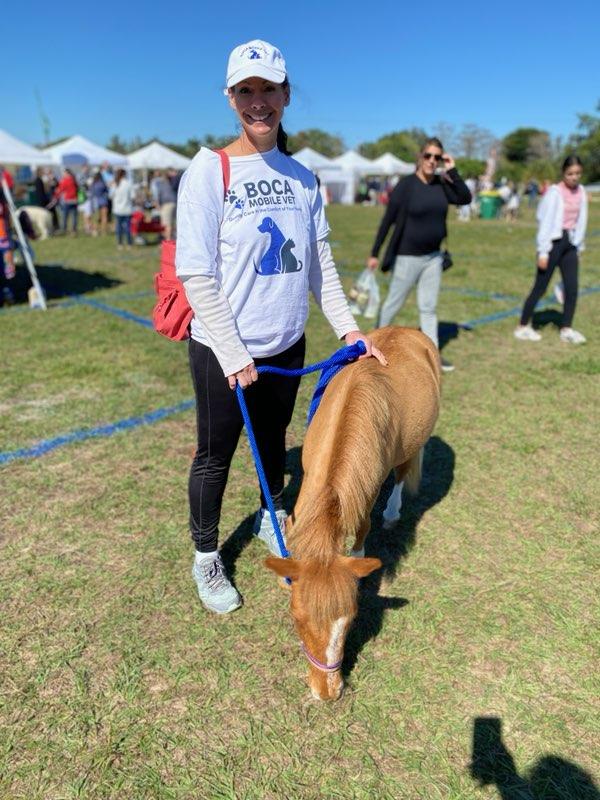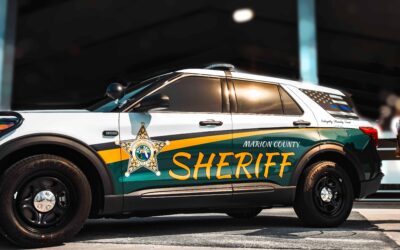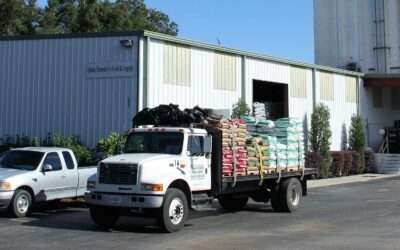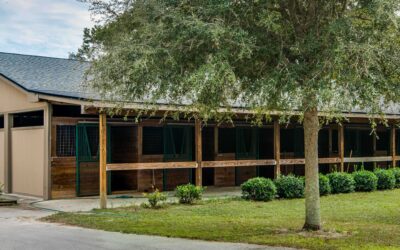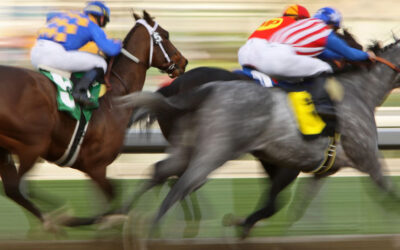
Photo Courtesy of Stacy Furgang, DMV
Pint-size Companions Deliver Full-Sized Fun
by
Cynthia McFarland
You can do anything with minis that can be done with full-size horses–except ride them. Minis provide a perfect way to be active in the horse world and for their owners, the satisfaction level is off the charts.
“Minis have really taken off. There’s a big boom right now in people aged 55 to 75 showing minis and ponies, mostly driving, but in-hand is also very big. Minis are very hardy and can pull a lot more weight in a carriage than people think.”
Practical History
They may be petite, but their proportions are harmonious and balanced with adults generally weighing between 150 to 250 pounds. An expressive head tops a compact body with short, but strong legs. Minis come in all colors and patterns, with any variety of white markings and eye color.
Although alert and agile, they are sociable, gentle and affectionate. This winning temperament makes them ideal as pets, and even as therapy animals when trained for that purpose. Owners say that minis have the looks and abilities of horses, but the personality of a Golden Retriever or similar family-friendly dog.
Miniature Horses hail from Europe where they first were bred as pets for royal families in the 1600s.
Their tiny size made Miniature Horses useful for working in coal mines. Lady Estella Hope of England was well known for her breeding program and had a four-in-hand driving team of Shetland Ponies that stood just 35-1/2 inches tall. The American Miniature Horse Association credits Shetland bloodlines and some minis in the U.S. trace back to the Hope line.
Today, minis are found in at least three dozen countries. There are two main registries for the breed: the American Miniature Horse Association (AMHA) and the American Miniature Horse Registry (AMHR).
The AMHA will not register horses standing taller than 34 inches, while the AMHR recognizes two divisions: “A” (up to 34 inches) and B (34 to 38 inches). Horses are measured from the last hair of the mane at the withers.
Although not all Miniature Horses are registered, many owners who are into competition like colored minis, some of which can be double registered as Paints or Pintos.
Unfortunately, with any animal that is consistently bred to be small, dwarfism can sometimes occur. This can result in undesirable features, such as a bulging forehead and extremely dished face, underbite, and stubby legs with club feet or other deformities. In a dwarf mini, the adult looks disproportionate with an oversized head and body for its small height. Buying only from reputable breeders is the best way to avoid dwarfism.
“Minis have really taken off. There’s a big boom right now in people aged 55 to 75 showing minis and ponies, mostly driving, but in-hand is also very big. Minis are very hardy and can pull a lot more weight in a carriage than people think,” says Gina Murphy of Peacock Ponies in Ocala, who has trained, sold and shown Miniature Horses and ponies for many years.
She points out that in addition to being safer and easier for older owners to handle, minis don’t require much acreage. This simple fact has made it more realistic and practical to own minis than full-sized equines.
A local show is a great spot to see Miniature Horses in action and learn more about the breed.
“Minis are very unintimidating for people to be introduced to horses for the first time. They traveled throughout the Miami area promoting horses to residents and putting a face on the racetrack. You train minis following the same principles as with a full-sized horse. When horses know you respect them, they’re more receptive to training and are very good to handle.”
“There are a lot of minis in this area and plenty of open shows where they don’t have to be registered to compete. The Ponies & Palms Miniature Horse Shows at the UMC showgrounds in Sparr are great shows to introduce people to minis,” says Murphy.
Falling for Minis
Minis found their way into Tammy Gantt’s life—and heart—when she was director of promotions for Calder Racecourse.
Churchill Downs (which owned the track) purchased a pair of Miniature Horses in 2000, which Tammy proceeded to train as tiny mascots to represent the track.
Purchased from Dent Miniature Horse Ranch in Vero Beach, Thunder stood 29 inches tall, and Lightning was just 26 inches tall.
“At the time, Lightning–who is a brown-and-white paint with blue eyes– was the smallest mini they’d ever bred,” says Gantt, who got the minis when they were just six months old.
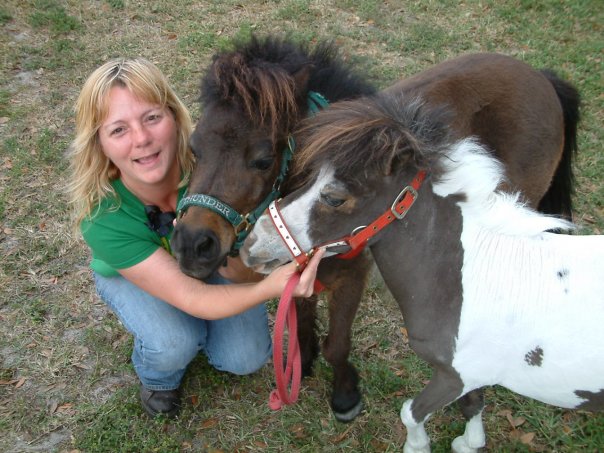
Photo Courtesy of Tammy Gantt
After a name contest with more than 500 children submitting entries, Thunder and Lightning were official mascots. They were the track mascots for the Junior Jockey Club from 2002 to 2012. For a decade, the pair were used in community outreach making appearances at schools, hospitals, Girl Scout functions and more. At many community events they offered kids their first opportunity to interact with horses.
“Minis are very unintimidating for people to be introduced to horses for the first time. They traveled throughout the Miami area promoting horses to residents and putting a face on the racetrack,” says Gantt.
“You train minis following the same principles as with a full-sized horse. When horses know you respect them, they’re more receptive to training and are very good to handle,” she explains.
Companions and Competitors
“I wanted a companion for the horse left behind when I was out riding, so I got my first mini in 2018,” says Furgang.
While on the hunt for another mini, she found a miniature donkey and foal, so she added them to the herd instead. She currently has three Miniature Horses and two mini donkeys.
“They’re literally like potato chips; I started with one and it quickly turned into five!” she laughs. “They’re all together in a herd and get along great. They’re so personable; it’s easy to have multiples.”
When Furgang and her husband, Chris, got married in 2019, she even included her mini “Pooh” in the wedding ceremony. He officially escorted her to the ceremony by carriage in a heartwarming scene.
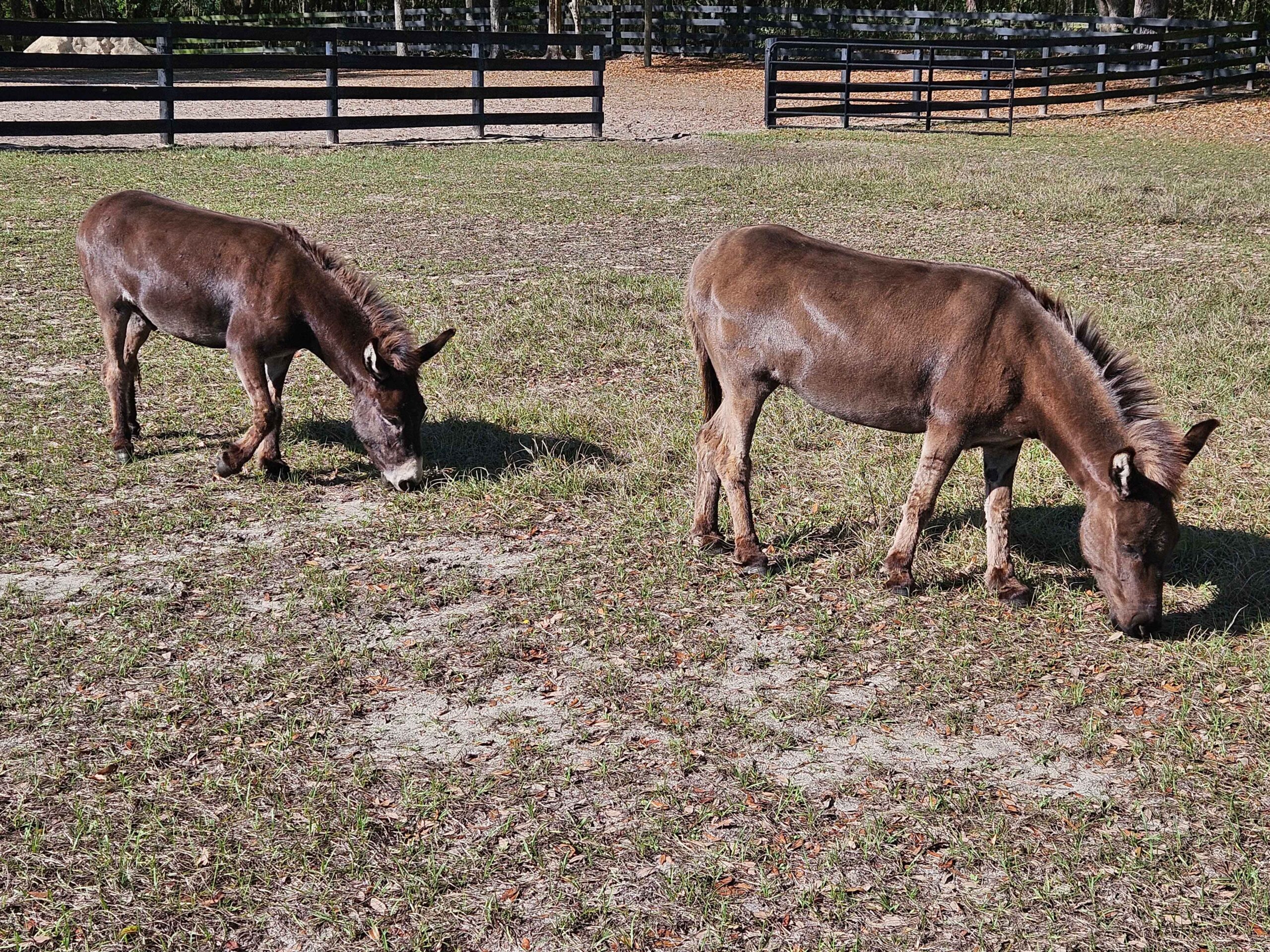
Photo Courtesy of Stacy Furgang, DMV
The couple and their horses now reside in the Morriston area at their Oakton Farm. Chris is totally on board with their mini equines. He even makes charcuterie boards for them featuring cut-up apples, bananas, and carrots.
Although Furgang shows jumpers, after she began driving Pooh, she started showing him at Miniature Horse shows. She also takes her minis to charity events to help with fundraising.
“They’re literally like potato chips; I started with one and it quickly turned into five! They’re all together in a herd and get along great. They’re so personable; it’s easy to have multiples.”
Local Mini Hotspot
“Driving is getting to be a really big sport. It’s great for older equestrians who can’t throw a leg over a horse, but want to stay involved,” she says.
Witmer got her own mini and began holding events at her facility. Tree Line Farm in Williston has become a popular spot with regular events for minis, including monthly shows and weekly driving days.
“These guys are little Ferraris! The more you work them, the more they want to work. They’re really good at jumping. They’re strong, smart, brave and fun,” says Witmer.
“Every Wednesday from 10am to 3pm we have a driving day for anyone with minis or ponies under 14.2 hands. You can come drive and practice the cones course. We also have an obstacle course you can do in-hand or driving,” says Witmer, noting that driving day runs through May.
“These guys are little Ferraris! The more you work them, the more they want to work. They’re really good at jumping. They’re strong, smart, brave and fun!”
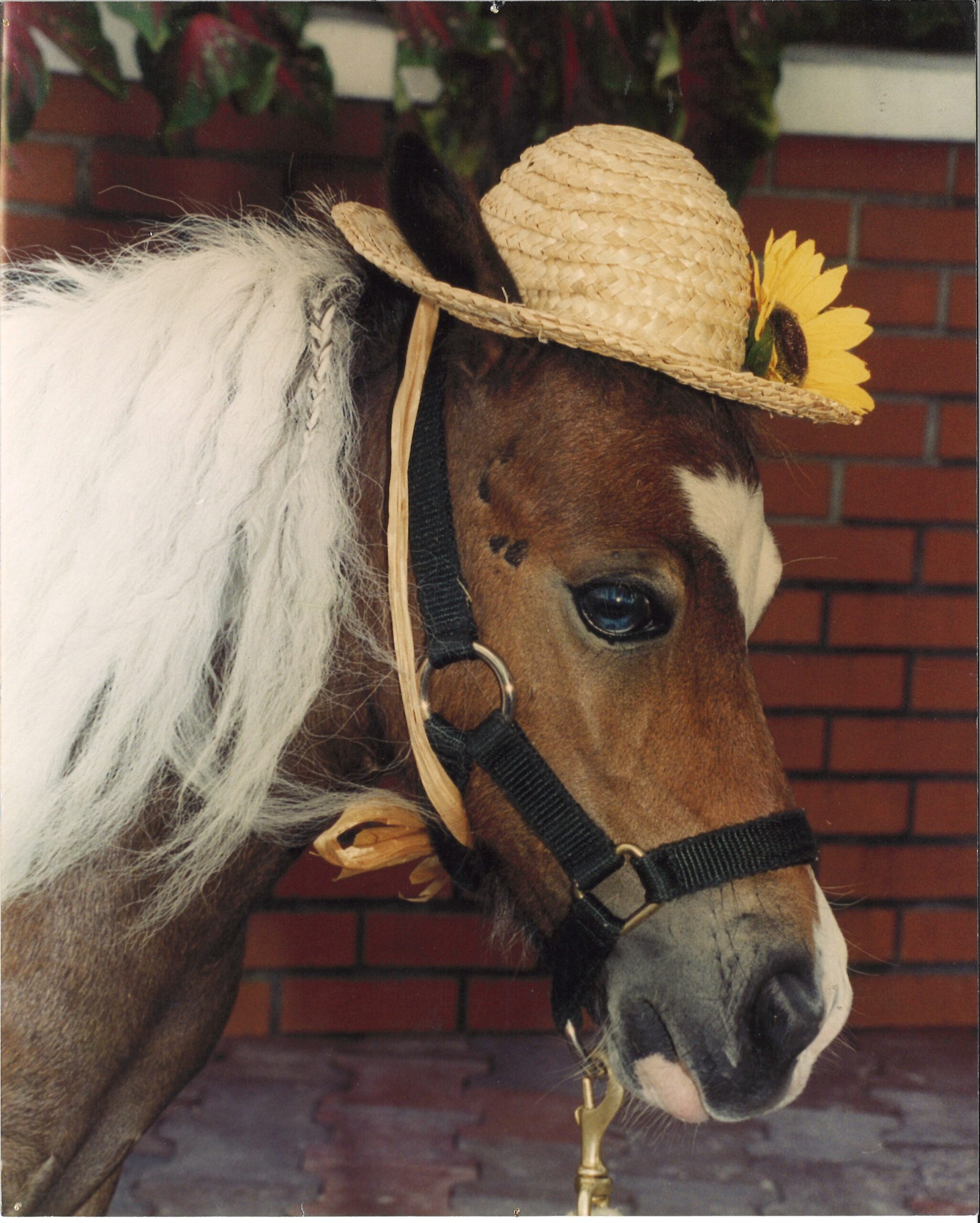
Photo Courtesy of Tammy Gantt
These monthly shows provide a great opportunity to see minis compete in halter classes, jumping (in-hand), driving, games, cones, and more.
Jumping is a spectator favorite. Of course, these tiny horses aren’t ridden. Rather, the exhibitor runs through the course alongside their mini, who is on a lead line.
In the hunter classes, horses are judged on form over fences. In jumping classes, horses are judged on speed and keeping the rails up. In the Puissance high-jump class, the mini with the highest jump over the Puissance wall wins. Thus far, the highest jump has been 38 inches.
The remaining show date for this spring is April 26. The show starts at 9am and runs until the last class wraps up.




Photos Courtesy of Gale Witmer
Local Mini Hotspot
When it comes to health care, Miniature Horses need the same basics as full-sized horses: routine hoof care, dental care, deworming, and vaccination. Ask other mini owners in your area to recommend a veterinarian who is experienced with minis.
Minis are “easy keepers” and can easily over-eat. Stacy Furgang, DVM, advises feeding a ration balancer instead of grain. This way, minis get the vitamins and minerals they need without the extra calories. Grass hay is usually sufficient rather than high protein hay like alfalfa.
If you have pasture, minis shouldn’t be turned out and allowed to graze 24/7, as they will eat more than needed to maintain weight and can be at risk of founder.
Thanks to their European bloodlines, minis can grow thick winter coats. For this reason, owners who show often keep them clipped and just blanket as needed through the coldest months.
As for fences, non-climb wire fencing that extends all the way to the ground is usually a safer option than board fencing as minis may be able to get under a bottom board if it’s not low enough.
In addition, you’ll want to be proactive and use fencing that keeps predators out. Given their small size, minis can be vulnerable to attack by aggressive dogs or coyotes.
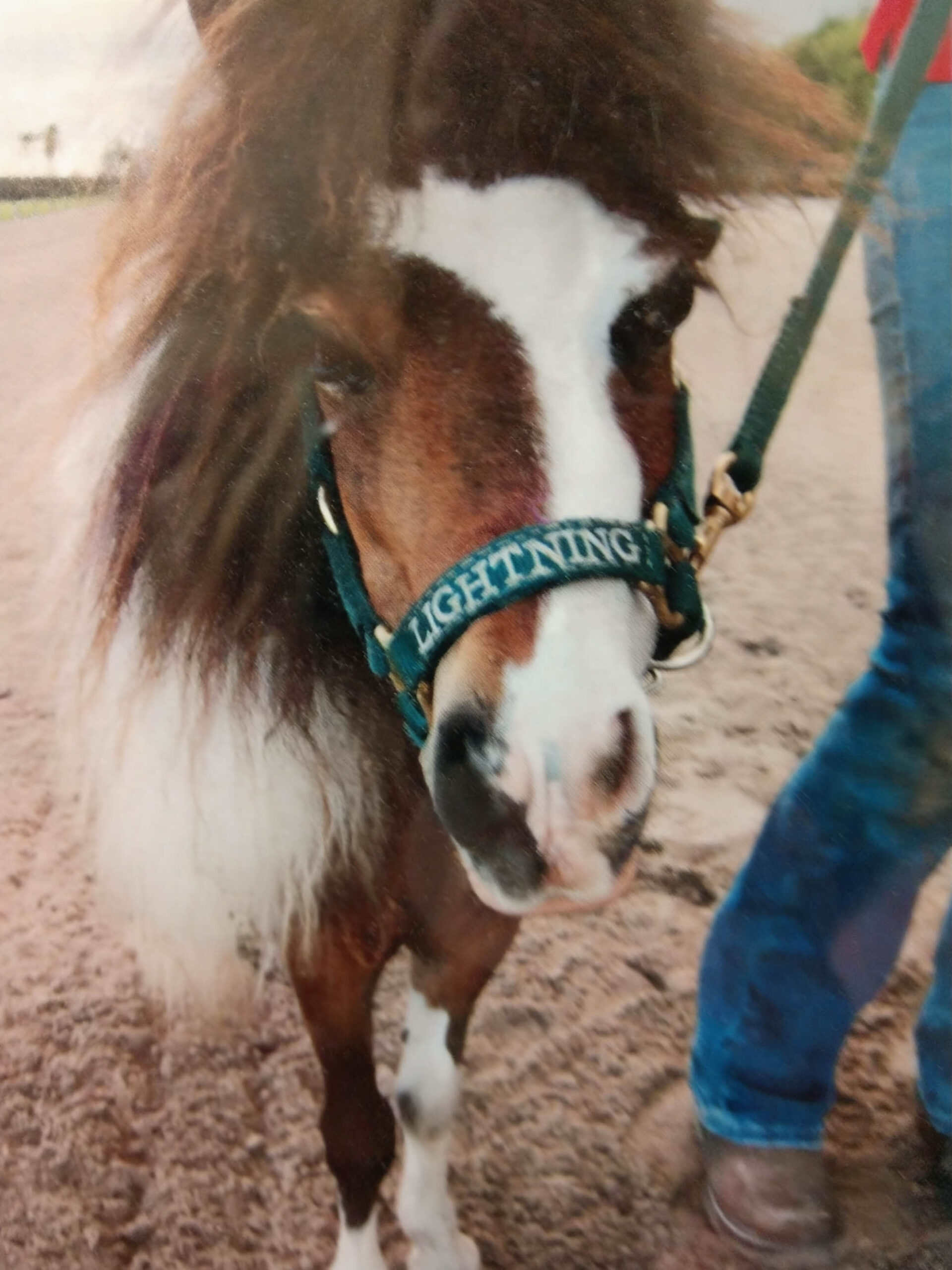
Photo Courtesy of Tammy Gantt
Because of their small size, you may have to make some modifications. For example, minis can walk right under standard trailer dividers, while generic waterers and stock tanks can be too tall for them to drink out of.
If you have full-size horses, the safest place for minis is in their own enclosure so they aren’t accidentally injured by a larger equine.
Get Involved
Ask anyone involved with Miniature Horses and the answer is clear. Minis may be pint-sized, but they deliver full-sized fun.
Learn More:
https://www.shetlandminiature.com/amhr
https://www.facebook.com/Peacockponies/
Tree Line Farm – next show April 26
https://www.facebook.com/profile.php/?id=61556007562154
Ponies & Palms Miniature Horse Show – next show April 19
https://www.facebook.com/profile.php?id=61552252191376
If you would like to read other equestrian related posts please be sure to check out some of our previous features.
Community Spotlight | Law Enforcement on Hooves
Law Enforcement on Hooves: Mounted Units at Home...
Business Spotlight | OBS Quality Feeds
OBS Quality Feeds: Homegrown Company Flourishes...
Seminole Feed | 90 Years of Serving Ocala
Seminole Feed : Hometown Feed Mill Celebrates 90...
Hurricane Season | Tips For Residential & Equestrian Properties
Hurricanes are a familiar sight to many...
Beyond Racing | Off-the-Track-Thoroughbreds Excel in New Careers
Beyond Racing: Off-the-Track-Thoroughbreds Excel...
2024 Belmont Stakes Horses with Ocala Connections
The final jewel of the Triple Crown series gets...
